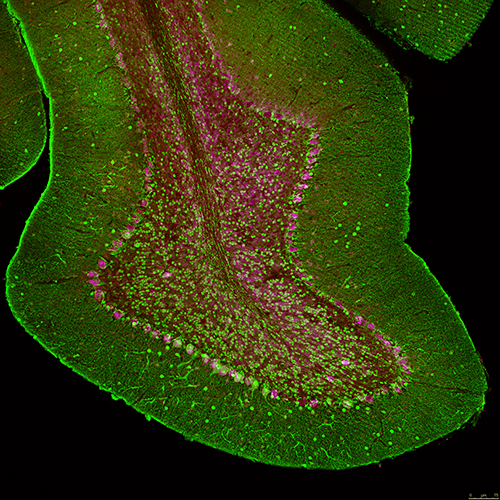 The University of Alabama at Birmingham is accelerating spatial biology research with announcement of $160,000 worth of vouchers to eight research teams to pay for experiments on UAB’s new Lunaphore COMET multiplex immunofluorescent platform, housed in the UAB Flow Cytometry and Single Cell Core.
The University of Alabama at Birmingham is accelerating spatial biology research with announcement of $160,000 worth of vouchers to eight research teams to pay for experiments on UAB’s new Lunaphore COMET multiplex immunofluorescent platform, housed in the UAB Flow Cytometry and Single Cell Core.
Spatial biology explores cellular microenvironments of human tissue samples to learn how millions of cells interact in 3D. Those interactions are vital in processes like inflammation, cancer or recovery from injury. Cells make decisions and accomplish goals through external stimuli from ligands in the extracellular fluid and from direct contact with other cells. Those decisions from cell-to-cell contact can exacerbate disease or speed healing.
Researchers identify different cell types using selective antibodies that recognize a particular feature of that cell type. Each antibody carries a fluorescent marker chosen from a wide variety of colors. The COMET platform analyzes a standard pathology tissue preparation — a small tissue biopsy mounted on a microscope slide with the cells all maintaining their original positions. The slide is loaded into the COMET machine along with a selection of different specific antibodies. The COMET then automatically adds, one by one, up to 40 antibodies to the sample. After one antibody is added and a picture is taken, the COMET machine gently elutes that antibody before adding the next.
In less than a day, these 40 protein markers are automatically detected in that one tissue sample without user intervention. The output from the COMET is a multicolored image, merged from all the photos taken, that shows the spatial distribution and interactions of all the marked cells. The image can be analyzed on any platform for spatial insight.
To kickstart COMET research at UAB, research teams were invited by the Marnix E. Heersink School of Medicine Immunology Institute and the I-4ward Strategic Theme to compete for eight $20,000 vouchers to cover the cost of a round of COMET experiments.
“We received 29 very competitive applications,” said Fran Lund, Ph.D., director of the Immunology Institute and a professor in the UAB Department of Microbiology. “Scoring was prioritized based on technical feasibility of the proposal, enhancement of our understanding of how cells interact within a tissue, and immediate use of generated data in an upcoming grant or manuscript submission.”
The winning awardees and titles of their projects are:
I-4ward Awardees
- Shinichi Kano, “Immune cell dynamics in chronic neuroinflammation following cortical brain damage.”
- Juhi Samal and Daniel Tyrrell, “Immune cell sialoglycan signatures in ischemic stroke.”
- Martin Young, “Targeting a novel circadian-regulated axis to prevent inflammation-mediated cardiac ischemia/reperfusion injury.”
- Adrie Steyn, “Biometal Profiling of Human Tuberculosis Lesions.”
Immunology Institute Awardees
- Nabiha Yusuf, “The role of a novel UVB-induced tolerogenic DC subset in immune suppression.”
- Jennifer Pollock, “Time of day localization of T cells with determinants of damage and dysfunction in obese kidneys.”
- Julie Carstens, “Defining the spatial landscape of secreted immune-regulatory pathways in liver metastasis.”
- Lyse Norian, “Stress-induced immune remodeling in the ovarian cancer tumor microenvironment.”
The awardees represent the Department of Dermatology, the Department of Microbiology, the Department of Pathology Division of Molecular and Cellular Pathology, the Department of Psychiatry Division of Behavioral Neurobiology, and the Department of Medicine divisions of Cardiovascular Disease, Nephrology and Hematology/Oncology, all in the Heersink School of Medicine; the Department of Biomedical Engineering in the UAB School of Engineering; and the Department of Nutrition Sciences in the UAB School of Health Professions.